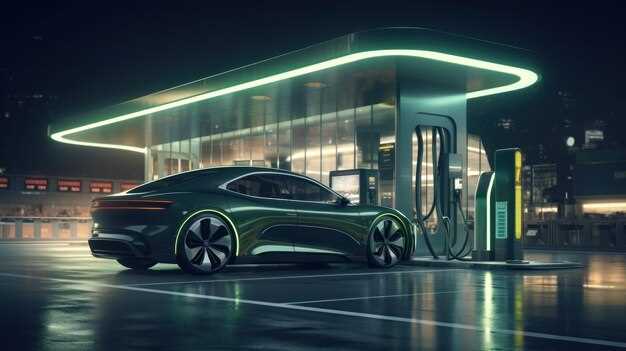Prioritize performance when choosing between luxury and speed. In the automotive world, a car that delivers thrilling acceleration and precise handling often provides greater satisfaction than flashy interiors or high-end materials. For instance, brands like Porsche and Ferrari have made their mark by engineering vehicles that offer exceptional driving experiences, proving that performance can outshine luxury.
A focus on performance not only enhances driving pleasure but also impacts long-term ownership satisfaction. Performance-driven vehicles tend to have better resale values, attracting buyers who prioritize reliability and driving dynamics. Take the BMW M series, which combines luxury with sporty performance. This duality appeals to a broad audience, demonstrating that one does not have to exclusively choose between luxury and performance.
When making your choice, consider test driving models that emphasize performance. Many enthusiasts suggest that the feel of the steering wheel and the response of the throttle can make all the difference. Remember that a car’s true joy often lies in the drive, not just the comfort of its seats. In this way, choosing a performance-oriented vehicle can provide a fulfilling and engaging experience that luxury alone may not deliver.
Luxury Versus Performance: What Matters More in Choice
Prioritize your personal values when choosing between luxury and performance. If you value refinement, style, and premium materials, luxury is your obvious choice. High-end brands often prioritize craftsmanship, offering a unique aesthetic that elevates your experience.
On the other hand, if speed, agility, and cutting-edge technology drive your passion, performance takes precedence. Performance-oriented models often feature superior engineering, advanced features, and thrilling driving experiences. When evaluating performance vehicles, look for metrics like horsepower, torque, and handling ratings to guide your decision.
Consider your lifestyle as well. Luxury may provide a sense of prestige and comfort during daily commutes or social events. Performance, however, may appeal more if you frequently engage in drive-centric activities or road trips. Test driving is key; feel the difference between luxury comfort and performance excitement in real-time.
Combine both elements for a balanced choice. Some modern vehicles offer a seamless blend of luxury and performance, satisfying both the desire for opulence and the demand for speed. This compromise could enhance your overall driving experience.
Research is critical. Look for reviews, expert opinions, and real user experiences. Commit to understanding what you genuinely want from a vehicle. Make a choice that not only reflects your style but also aligns with your driving aspirations.
Understanding the Concept of Luxury in Consumer Choices
Define luxury not just by expense but by the experiences and emotions it evokes. Luxury should create a sense of exclusivity and providing a break from the ordinary. Focus on products or services that prioritize craftsmanship, heritage, and personal connection over plain functionality.
Identify your audience. Luxury consumers often seek status, uniqueness, and personalization. Brands that listen to their customers and cater to their individual tastes stand out. Use data-driven insights to tailor offerings that resonate with target demographics.
Highlight authenticity. Luxury brands must tell compelling stories about their origins, materials, or design philosophy. Authenticity builds trust and strengthens the emotional bond between consumers and brands. Transparency about sourcing and production enhances this connection.
Consider the role of experience in luxury. Create environments that elevate the consumer journey. Premium retailers focus on aesthetics and sensory engagement in their stores or services. Providing exceptional customer service adds to perceived value, turning transactions into lasting relationships.
Stay aware of changing consumer values. Today’s luxury consumers appreciate sustainability and social responsibility. Brands committed to ethical practices attract discerning buyers. Engaging with community initiatives can enhance a brand’s luxury status.
Leverage technology to enhance the luxury experience. Personalized recommendations powered by AI or virtual try-ons can offer convenience while maintaining that exclusive feel. Use innovative marketing strategies to keep the conversation around the brand relevant and engaging.
Promote limited editions or exclusive collaborations. Scarcity fuels desire, encouraging consumers to act quickly and feel special. Highlight these limited offerings through targeted campaigns to enhance their perceived value.
Finally, encourage feedback and foster a community around the brand. Luxury is about belonging to an elite group. Creating platforms for customers to share experiences or exclusive events enhances this feeling of community while providing valuable insights for the brand.
Exploring Performance Metrics: What Qualifies as High Performance?
High performance is characterized by specific metrics that indicate power, agility, and efficiency. For instance, in automotive contexts, metrics such as acceleration time (0-60 mph in under 4 seconds), top speed (exceeding 150 mph), and lap times on a race track serve as key indicators. A vehicle achieving high scores in these categories typically qualifies as a performer.
In the tech sector, performance can be gauged using benchmarks like processing speed (measured in GHz), graphics rendering capabilities (measured in frames per second), and responsiveness (latency in milliseconds). Devices with faster processors and lower latency scores consistently outperform their peers.
For operability, consider fuel economy in vehicles, expressed as miles per gallon (MPG). A high-performance vehicle often balances power with efficiency, achieving competitive MPG without sacrificing speed. Similarly, in computing, high performance relates to energy efficiency, optimizing processing power while minimizing energy consumption.
User experience also contributes to performance metrics. Quick load times for websites (ideally under 3 seconds) and minimal lag in applications directly enhance user satisfaction. Reliability and stability, measured through uptime percentages, are equally important; high-performance systems typically boast 99.9% uptime or higher.
Finally, advanced technologies like adaptive suspension systems in cars or AI-driven algorithms in software can signify superior performance. These features enhance control, responsiveness, and adaptability, placing high-performing models ahead in their respective fields.
How to Evaluate Your Priorities: Luxury vs. Performance
Identify your main activities. Consider how often you rely on performance-driven features versus luxury elements. For instance, if you commute daily, prioritize efficiency and reliability. Alternatively, if you attend numerous social events, luxury might play a larger role.
List your lifestyle needs. Create a chart to visualize your preferences and requirements. This will help clarify what matters most to you. Here’s a simple table to assist with this process:
| Factors | Luxury Rating (1-5) | Performance Rating (1-5) |
|---|---|---|
| Daily Commute | 2 | 5 |
| Social Events | 5 | 3 |
| Family Travels | 3 | 4 |
| Weekend Adventures | 4 | 5 |
Evaluate your budget. Luxury items often come with higher costs, while performance-driven products can be more practical and economical. Calculate how much you are willing to invest in either area. This will help in making informed choices without overspending.
Test both options whenever possible. Experience luxury and performance firsthand through test drives or product demos. This exposure will clarify what resonates more with your expectations and preferences.
Consider long-term value. Analyze how each choice aligns with your future plans. A performance-oriented vehicle may offer savings on maintenance and fuel, whereas a luxury product might retain its value better over time. Forecasting these aspects will guide you toward a balanced decision.
Engage with others. Seek opinions from friends or family who have made similar decisions. Their experiences can provide insights into the trade-offs that may influence your final choice.
Reassess regularly. As your lifestyle changes, so may your priorities. Periodically revisit your evaluations to ensure they reflect your current needs and aspirations. Adjust your rankings in the chart as necessary to keep your choices aligned with your values.
The Role of Brand Perception in Luxury and Performance Appeal
Brand perception significantly influences consumer decisions between luxury and performance products. A strong brand image can enhance perceived value, driving consumers toward luxury items. For instance, brands like Rolex and Louis Vuitton leverage heritage and exclusivity, creating an allure that transcends mere functionality.
On the performance side, brands such as Ferrari and Porsche cultivate an image centered on engineering excellence and speed. Their reputation for top performance enhances desirability, appealing to those who prioritize engineering prowess alongside status. Potential buyers often associate these brands with high-quality materials and innovative designs, reinforcing their choice.
Social proof and endorsements amplify brand perception. Positive reviews from trusted sources or influencers can sway decisions, especially in luxury markets where peer validation holds weight. This amplifies the competitive edge for brands that secure positions as leaders in their fields.
Transparency also plays a role in shaping brand perception. Consumers increasingly value brands that demonstrate ethical practices and sustainability. Luxury brands must balance tradition with social responsibility to meet evolving consumer expectations, while performance brands that highlight sustainable technologies can enhance their appeal further.
Ultimately, successful brands merge luxury and performance narratives, creating products that resonate on both emotional and practical levels. Fostering an engaging brand story can attract a diverse consumer base, making the brand compelling to various segments in the market.
Real-World Examples: Brands That Balance Luxury and Performance
Mercedes-Benz exemplifies the perfect blend of luxury and performance through its AMG line. The AMG models maintain the luxurious interior quality while boasting powerful engine options, delivering a thrilling driving experience. The Mercedes-AMG GT, for instance, combines exquisite craftsmanship with a robust V8 engine, highlighting how luxury can coexist with exhilarating performance.
Audi’s RS series sets another benchmark. Models like the Audi RS7 not only feature high-end finishes and advanced technology but also pack a punch with a twin-turbocharged V8 engine capable of accelerating from 0 to 60 mph in just 3.5 seconds. This balance attracts enthusiasts and luxury buyers alike.
Porsche effortlessly integrates luxury with performance in their 911 series. This iconic sports car offers an upscale cabin and advanced infotainment while ensuring an exhilarating drive. The 911 Turbo S showcases remarkable acceleration and handling, appealing to those who demand both sophistication and speed.
Another strong contender is BMW with its M division. The BMW M5 delivers an unmatched driving experience, combining elegant design elements with robust engineering. The integration of luxurious features, such as premium leather upholstery and cutting-edge technology, makes it a top choice for performance-oriented luxury seekers.
Jaguar stands out with its F-PACE SVR, which combines the elegance of a luxury SUV with performance-driven capabilities. With its supercharged V8 engine, this vehicle offers impressive speed without compromising on comfort or style, making it a practical choice for families who appreciate high performance.
Each of these brands illustrates that luxury and performance are not mutually exclusive. By prioritizing both elements, they capture the attention of diverse audiences, catering to those who seek refined aesthetics alongside powerful capabilities.
Making Informed Decisions: Tools for Assessing Your Preferences
Begin with a clear framework to evaluate your priorities between luxury and performance. Assess how each aspect aligns with your lifestyle and usage scenarios. Consider the following strategies:
Self-Assessment Questionnaire: Create a list of questions addressing your preferences. Sample questions may include:
- How often do you use your vehicle for leisure versus daily commuting?
- Do you prioritize comfort and aesthetics over speed and handling?
- What brands resonate with your values and aesthetics?
Research Different Models: Compile a comparison chart. List vehicles based on features, price, and user reviews. Key attributes to include:
- Acceleration and handling qualities
- Interior luxury features
- Maintenance costs and reliability ratings
Test Drives: Schedule test drives for models that pique your interest. Utilize this opportunity to:
- Evaluate comfort and design elements
- Experience the vehicle’s performance on different terrains
- Consider the noise levels and driving dynamics
Consult Expert Reviews: Read automotive magazines and online reviews. Focus on critiques that detail luxury and performance aspects. Pay attention to:
- Expert comparisons specific to your preferred style
- User testimonials that express long-term satisfaction
Prioritize Resale Value: Investigate how luxury or performance influences resale prices. Take into account:
- Market trends for luxury brands versus performance-oriented ones
- The depreciation rate of models you’re interested in
Organize your findings and reflect on which aspects truly enhance your driving experience. Use this structured approach to facilitate a balanced decision between luxury and performance, making the choice that best fits your needs.







